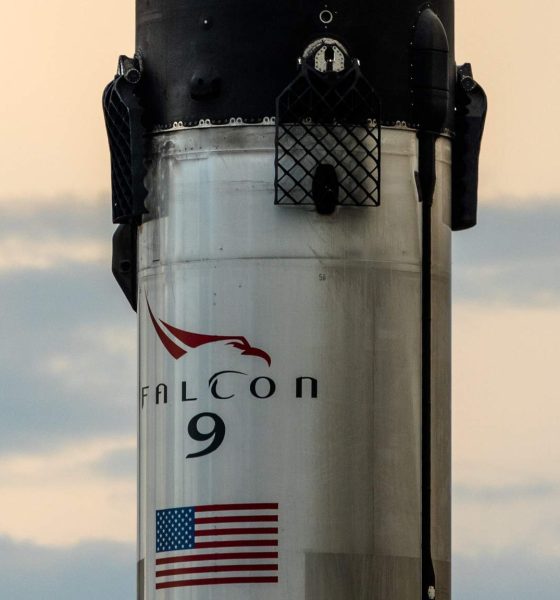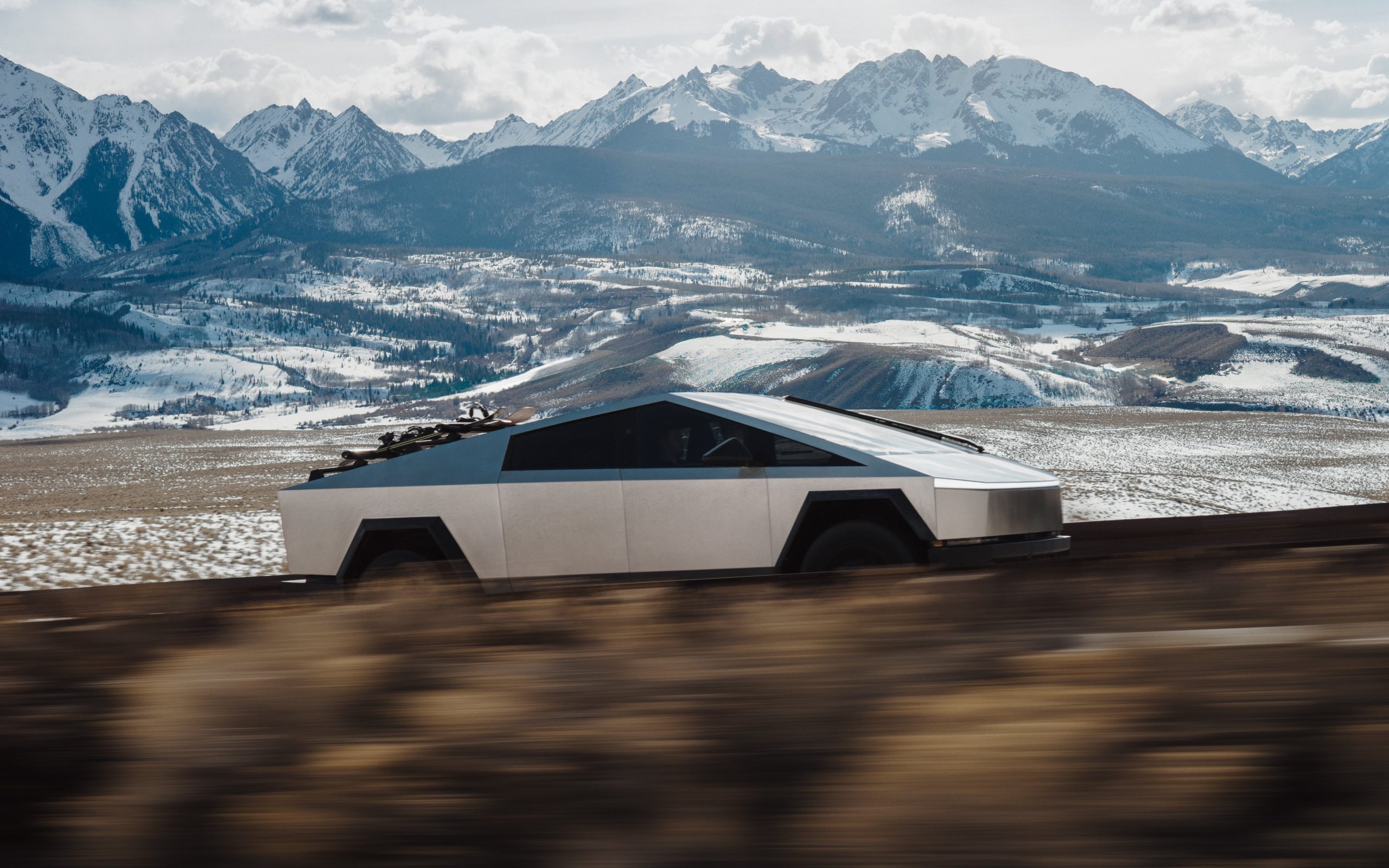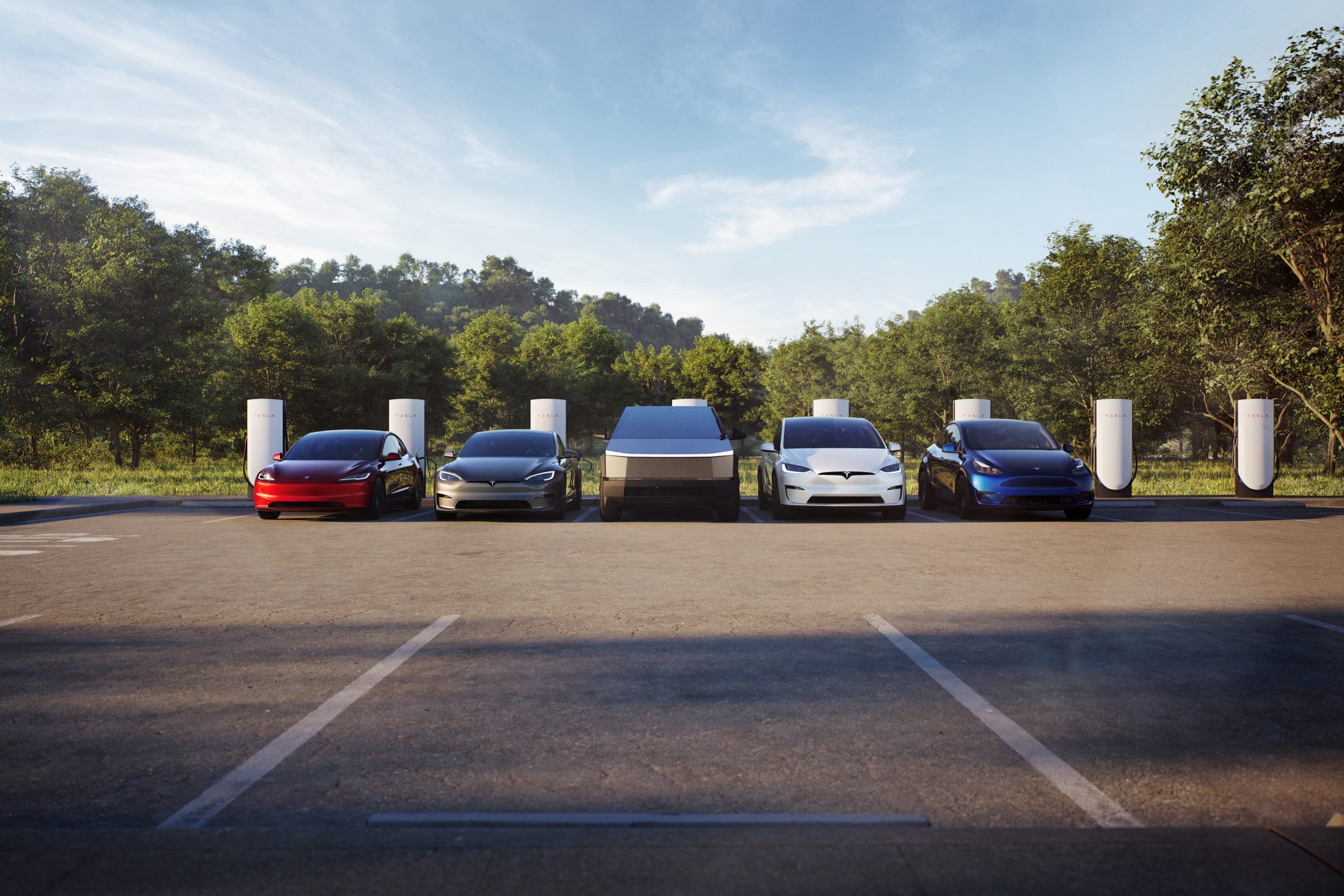

News
SpaceX’s latest Falcon 9 booster returns to port as NASA hints at “vested interest”
SpaceX has safely returned Falcon 9 booster B1056 to port and lifted the rocket ashore after successfully supporting Cargo Dragon’s 18th mission to the International Space Station (ISS).
B1056’s safe return is by no means a surprise, but it is still a relief after mild issues caused Falcon Heavy center core B1055 to topple over just a few weeks prior. SpaceX’s robotic “Octagrabber” was visibly attached to newest Falcon 9 booster, taking advantage of compatibility not available to the Falcon Heavy core. According to NASA and SpaceX, the booster’s recovery was weighing on the minds of both stakeholders thanks to interest in reusing B1056 on future Cargo Dragon launches.
“Quite frankly, [NASA] had a vested interest.”
“Quite frankly, [NASA] had a vested interest in this particular booster. We were gonna require it – the intent is to [reuse it for SpaceX’s upcoming CRS-18 launch] and – potentially – CRS-19.”
Kenny Todd, ISS Operations and Integration Manager, NASA Johnson
Intertwined with SpaceX successfully returning the booster to shore, NASA ISS manager Kenny Todd provided some fascinating and eloquent insight into the space agency’s position on the mission. Several questions from members of the press centered around a launch scrub that pushed CRS-17 from May 3-4. SpaceX VP of Flight Reliability Hans Koenigsmann noted that SpaceX is moving to a concept of operations where booster recovery is just as important and just as necessary as any other technical aspect of launch.
In other words, when SpaceX drone ship Of Course I Still Love You (OCISLY) suffered a rare hardware failure that hobbled its redundant power supplies, NASA had no qualms with the company’s decision to scrub the launch attempt. In fact, confirming educated speculation previously published on Teslarati, NASA had a “vested interest” in the successful recovery of B1056. According to Todd’s comments, NASA unequivocally wants SpaceX to fly its next Cargo Dragon mission – CRS-18, NET mid-July – on the newly flight-proven booster. NASA is even open to flying on B1056 for a third time on CRS-19, pending the condition and availability of the booster.
Unique in SpaceX’s Falcon 9 Block 5 fleet thanks to an exceptionally gentle reentry and recovery, B1056 should easily lend itself to multiple reuses in support of future NASA missions. In fact, of the three (up to as many as five) additional CRS1 Cargo Dragon missions still on contract, there is no immediate technical reason to assume that Falcon 9 B1056 can’t be involved in a majority of those launches, if not all of them. NASA, of course, has the final say in which Falcon 9s their missions launch on, but the agency’s apparent openness to launching on a twice-flown booster opens the door for thrice-flown boosters and beyond.
Space oddities and Falcon curiosities
B1056’s return also offered a unique – if not unprecedented – glimpse of what was likely a purge of TEA/TEB, the pyrophoric fluids Falcon 9 uses to ignite its Merlin engines. Normally, SpaceX recovery technicians likely perform this purge while still hundreds of miles out at sea. Drone ship OCISLY’s perch just a dozen or so miles from Port Canaveral and the Florida coast may have precluded this, leading to a rare bit of controlled in-port fireworks. While the sight of open flame beneath a freshly-recovered rocket triggered some immediate and understandable concern from bystanders, the process appears to have been both routine and controlled by SpaceX.


On a more minor note, SpaceX also appears to have debuted at least one minor (visible) hardware modification on B1056, utilizing a new hybrid method to join the top of Falcon 9’s liquid oxygen tank to its interstage (the black section). SpaceX prides itself on the practice of continuously improving all aspects of its rockets and spacecraft, so this change is more of a small visualization of that strategy than a major revelation.
Up next for SpaceX, however, is a launch that may end up being quite the revelation for observers. The mission – SpaceX’s official Starlink launch debut – is the first of many dozens of launches planned over the next five or so years. According to people familiar with the matter, both the quantity and weight of the Starlink satellites that will be aboard Falcon 9 are likely to blow expectations out of the water, particularly after competitor OneWeb’s first launch placed just five spacecraft in orbit. Starlink-1 (for lack of an official name) is scheduled to launch no earlier than May 13th, although CRS-17’s launch delays may delay that target by several days.
Check out Teslarati’s Marketplace! We offer Tesla accessories, including for the Tesla Cybertruck and Tesla Model 3.

News
Tesla stands to gain from Ford’s decision to ditch large EVs
Tesla is perhaps the biggest beneficiary of Ford’s decision, especially as it will no longer have to deal with the sole pure EV pickup that outsold it from time to time: the F-150 Lightning.

Ford’s recent decision to abandon production of the all-electric Ford F-150 Lightning after the 2025 model year should yield some advantages for Tesla.
The Detroit-based automaker’s pivot away from large EVs and toward hybrids and extended-range EVs that come with a gas generator is proof that sustainable powertrains are easy on paper, but hard in reality.
Tesla is perhaps the biggest beneficiary of Ford’s decision, especially as it will no longer have to deal with the sole pure EV pickup that outsold it from time to time: the F-150 Lightning.
Here’s why:
Reduced Competition in the Electric Pickup Segment
The F-150 Lightning was the Tesla Cybertruck’s primary and direct rival in the full-size electric pickup market in the United States. With Ford’s decision to end pure EV production of its best-selling truck’s electric version and shifting to hybrids/EREVs, the Cybertruck faces significantly less competition.

Credit: Tesla
This could drive more fleet and retail buyers toward the Cybertruck, especially those committed to fully electric vehicles without a gas generator backup.
Strengthened Market Leadership and Brand Perception in Pure EVs
Ford’s pullback from large EVs–citing unprofitability and lack of demand for EVs of that size–highlights the challenges legacy automakers face in scaling profitable battery-electric vehicles.
Tesla, as the established leader with efficient production and vertical integration, benefits from reinforced perception as the most viable and committed pure EV manufacturer.

Credit: Tesla
This can boost consumer confidence in Tesla’s long-term ecosystem over competitors retreating to hybrids. With Ford making this move, it is totally reasonable that some car buyers could be reluctant to buy from other legacy automakers.
Profitability is a key reason companies build cars; they’re businesses, and they’re there to make money.
However, Ford’s new strategy could plant a seed in the head of some who plan to buy from companies like General Motors, Stellantis, or others, who could have second thoughts. With this backtrack in EVs, other things, like less education on these specific vehicles to technicians, could make repairs more costly and tougher to schedule.
Potential Increases in Market Share for Large EVs
Interestingly, this could play right into the hands of Tesla fans who have been asking for the company to make a larger EV, specifically a full-size SUV.
Customers seeking large, high-capability electric trucks or SUVs could now look to Tesla for its Cybertruck or potentially a future vehicle release, which the company has hinted at on several occasions this year.
With Ford reallocating resources away from large pure EVs and taking a $19.5 billion charge, Tesla stands to capture a larger slice of the remaining demand in this segment without a major U.S. competitor aggressively pursuing it.
News
Ford cancels all-electric F-150 Lightning, announces $19.5 billion in charges
“Rather than spending billions more on large EVs that now have no path to profitability, we are allocating that money into higher returning areas, more trucks and van hybrids, extended range electric vehicles, affordable EVs, and entirely new opportunities like energy storage.”

Ford is canceling the all-electric F-150 Lightning and also announced it would take a $19.5 billion charge as it aims to quickly restructure its strategy regarding electrification efforts, a massive blow for the Detroit-based company that was once one of the most gung-ho on transitioning to EVs.
The announcement comes as the writing on the wall seemed to get bolder and more identifiable. Ford was bleeding money in EVs and, although it had a lot of success with the all-electric Lightning, it is aiming to push its efforts elsewhere.
It will also restructure its entire strategy on EVs, and the Lightning is not the only vehicle getting the boot. The T3 pickup, a long-awaited vehicle that was developed in part of a skunkworks program, is also no longer in the company’s plans.
Instead of continuing on with its large EVs, it will now shift its focus to hybrids and “extended-range EVs,” which will have an onboard gasoline engine to increase traveling distance, according to the Wall Street Journal.
“Ford no longer plans to produce select larger electric vehicles where the business case has eroded due to lower-than-expected demand, high costs, and regulatory changes,” the company said in a statement.
🚨 Ford has announced it is discontinuing production of the F-150 Lightning, as it plans to report a charge of $19.5 billion in special items.
The Lightning will still be produced, but instead with a gas generator that will give it over 700 miles of range.
“Ford no longer… pic.twitter.com/ZttZ66SDHL
— TESLARATI (@Teslarati) December 15, 2025
While unfortunate, especially because the Lightning was a fantastic electric truck, Ford is ultimately a business, and a business needs to make money.
Ford has lost $13 billion on its EV business since 2023, and company executives are more than aware that they gave it plenty of time to flourish.
Andrew Frick, President of Ford, said:
“Rather than spending billions more on large EVs that now have no path to profitability, we are allocating that money into higher returning areas, more trucks and van hybrids, extended range electric vehicles, affordable EVs, and entirely new opportunities like energy storage.”
CEO Jim Farley also commented on the decision:
“Instead of plowing billions into the future knowing these large EVs will never make money, we are pivoting.”
Farley also said that the company now knows enough about the U.S. market “where we have a lot more certainty in this second inning.”
News
SpaceX shades airline for seeking contract with Amazon’s Starlink rival

SpaceX employees, including its CEO Elon Musk, shaded American Airlines on social media this past weekend due to the company’s reported talks with Amazon’s Starlink rival, Leo.
Starlink has been adopted by several airlines, including United Airlines, Qatar Airways, Hawaiian Airlines, WestJet, Air France, airBaltic, and others. It has gained notoriety as an extremely solid, dependable, and reliable option for airline travel, as traditional options frequently cause users to lose connection to the internet.
Many airlines have made the switch, while others continue to mull the options available to them. American Airlines is one of them.
A report from Bloomberg indicates the airline is thinking of going with a Starlink rival owned by Amazon, called Leo. It was previously referred to as Project Kuiper.
American CEO Robert Isom said (via Bloomberg):
“While there’s Starlink, there are other low-Earth-orbit satellite opportunities that we can look at. We’re making sure that American is going to have what our customers need.”
Isom also said American has been in touch with Amazon about installing Leo on its aircraft, but he would not reveal the status of any discussions with the company.
The report caught the attention of Michael Nicolls, the Vice President of Starlink Engineering at SpaceX, who said:
“Only fly on airlines with good connectivity… and only one source of good connectivity at the moment…”
CEO Elon Musk replied to Nicolls by stating that American Airlines risks losing “a lot of customers if their connectivity solution fails.”
American Airlines will lose a lot of customers if their connectivity solution fails
— Elon Musk (@elonmusk) December 14, 2025
There are over 8,000 Starlink satellites in orbit currently, offering internet coverage in over 150 countries and territories globally. SpaceX expands its array of satellites nearly every week with launches from California and Florida, aiming to offer internet access to everyone across the globe.
Currently, the company is focusing on expanding into new markets, such as Africa and Asia.











